This purple-hued Filipino treasure has been my faithful merienda companion since childhood. While modern cafés tempt with their fancy pastries, nothing quite compares to the comfort of homemade kalamay, especially when shared with a steaming cup of ginger tea and good company.
This recipe, perfected through generations of patient stirring and whispered secrets, brings that same comfort right to your kitchen. It's more than just a dessert, it's a pause, a moment of sweetness in our busy days, and a reminder that the best things in life take time and love to create.
What is Ube Kalamay?
Ube Kalamay is a traditional Filipino rice cake defined by its striking purple hue and deliciously chewy texture. Made by slow-cooking glutinous rice flour with fresh ube (purple yam) and coconut milk until thick and glossy, then crowned with toasted coconut curds (latik), this sticky delicacy embodies the patient artistry of Filipino dessert-making. Each piece holds both the earthy sweetness of ube and the rich complexity of coconut, creating a textural experience that's simultaneously tender, chewy, and indulgently sticky.
Jump to:
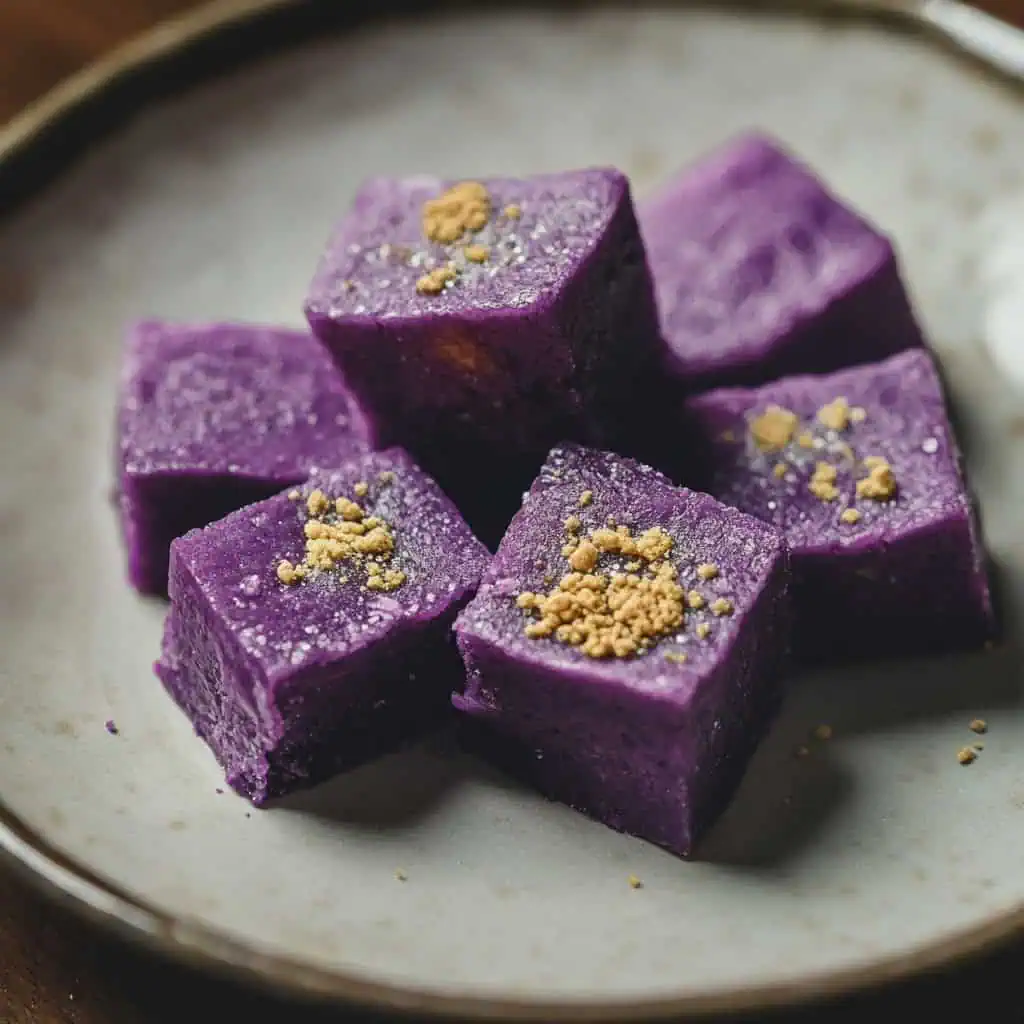
Why You'll Love This Recipe
- Authentic taste that rivals traditional marketplace kalamay
- Foolproof instructions for perfect consistency every time
- Made with pure ube (no artificial flavoring)
- Rich cultural significance for special occasions
- Impressive purple color that's 100% natural
- Perfect balance of chewy and sticky textures
Ingredients
The ingredients in this Ube Kalamay recipe work together to create authentic Filipino magic in every bite. Glutinous rice flour provides the signature chewy texture that makes kalamay so satisfying, while fresh purple yam (ube) contributes both natural color and earthy sweetness without artificial additives.
Thick coconut milk adds richness and creaminess, balancing the starchy base with tropical flavor. The combination of white sugar and salt enhances both sweetness and depth, while coconut oil prevents sticking and adds subtle fragrance.
Banana leaves aren't just decorative—they impart a distinctive aroma that's unmistakably Filipino, and the latik (toasted coconut curds) topping adds delightful textural contrast with its nutty crunch.
Together, these ingredients represent generations of Filipino culinary wisdom, creating a dessert that's both visually stunning and authentically delicious.
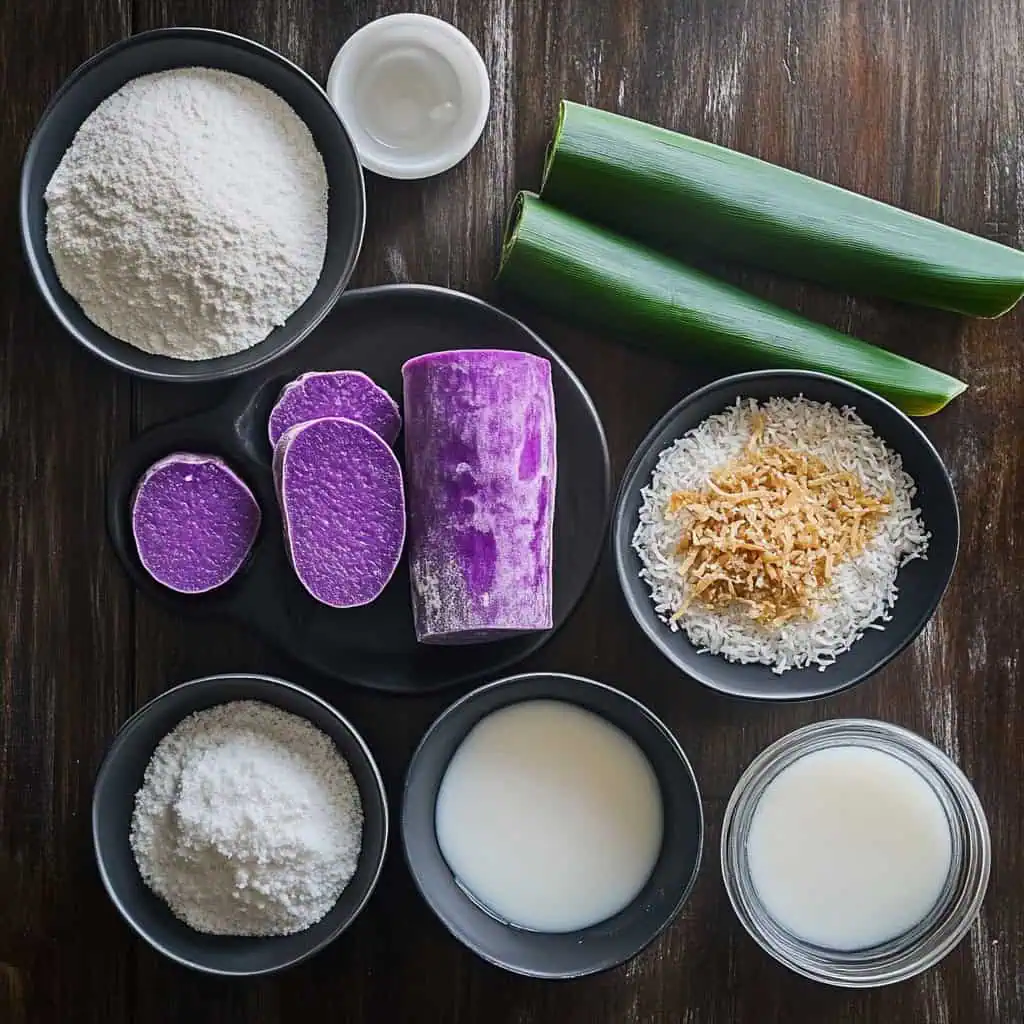
For the Kalamay:
- 2 cups glutinous rice flour (galapong)
- ¾ cup fresh grated purple yam (ube halaya)
- 800 ml thick coconut milk (kakang gata)
- 1 ½ cups white sugar
- ¼ teaspoon salt
- 2 tablespoons coconut oil (langis ng niyog)
For the Topping:
- ½ cup latik (toasted coconut milk curds)
- Banana leaves for lining (dahon ng saging)
Equipment
- Large non-stick pan (kawa): For even heat distribution and preventing burning during the long cooking process
- Wooden spoon (sandok): Traditional tool for stirring that won't scratch your pan and provides the right resistance for proper mixing
- Coconut grater (kudkuran): If using fresh coconut, this helps extract maximum flavor
- Cheesecloth or fine strainer: For extracting smooth, pure coconut milk without pulp
- Heat-resistant spatula: For scraping sides of pan to prevent burning and ensure even cooking
- 8x8 inch baking pan or traditional wooden mold (bilao): Provides the proper depth for authentic texture
- Kitchen scale: For precise measurements that ensure consistent results every time
- Heavy-duty gloves: For protection while stirring hot mixture, preventing burns during the long cooking process
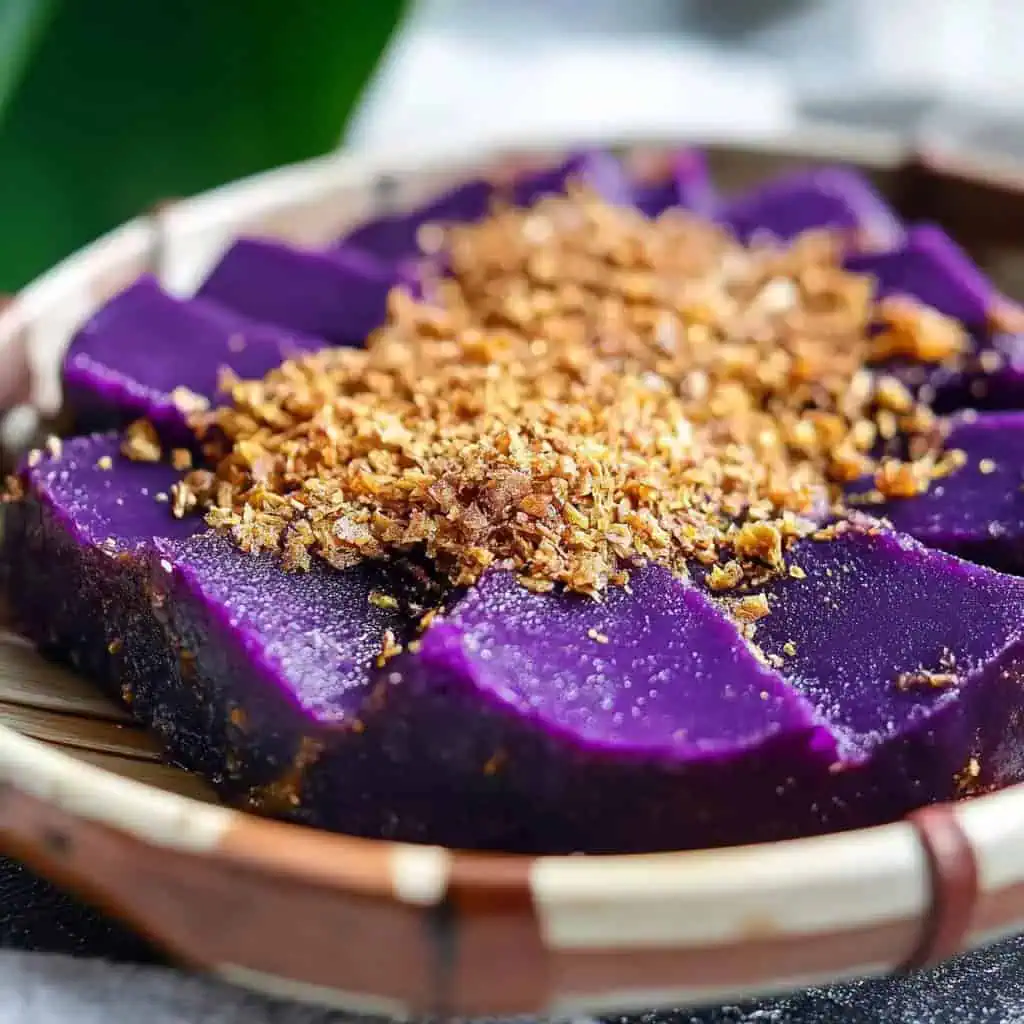
How To Make
- Take your banana leaves and hold them briefly over low heat until they become soft and bendable. Wipe them clean, then use them to line your pan. Brush the leaves with coconut oil.
- Mix your glutinous rice flour with 400ml coconut milk in a large bowl. Stir until smooth with no lumps. Set aside.
- Pour the remaining coconut milk into a heavy pan over medium heat (175°C). Add your grated purple yam and stir continuously for 5 minutes until fragrant.
- Pour your rice flour mixture into the pan, stirring as you go. Add sugar and salt. Keep stirring constantly for about 30-40 minutes. The mixture will get thicker and harder to stir – this is exactly what you want.
- You'll know it's ready when the mixture pulls away from the sides of the pan and feels very thick when you stir. The temperature should be around 180°C. If you drop a small amount in cold water, it should form a firm ball.
- Pour the mixture into your banana leaf-lined pan. Use an oiled spatula to smooth the top. While it's still warm, sprinkle generously with latik (toasted coconut curds).
- Let it cool completely at room temperature for 2-3 hours. During this time, it will set and develop its chewy texture.
- Once cooled, cut into diamond shapes using a sharp knife. Clean the knife between cuts for neat edges.
- Serve your kalamay on fresh banana leaves. It pairs perfectly with hot ginger tea and makes a wonderful afternoon snack.
Remember: Good kalamay takes patience. The long, slow stirring is what gives it that perfect sticky, chewy texture that makes it so special.

Tips from Lola's Kitchen
- Arm strength matters: Stir in a figure-8 pattern for even cooking and to develop the right texture
- Make it a family affair: Your arm will get tired - take turns with family members for authentic bayanihan spirit
- Prevent sticking: If mixture sticks to spoon, oil it lightly with coconut oil
- Check doneness properly: Test by dropping a small amount in cold water - it should form a firm ball immediately
- Trust your instincts: The mixture will become noticeably harder to stir when it's approaching readiness
- Consistent heat: Maintain medium-low heat throughout cooking to prevent burning and ensure even cooking
- Rest period is crucial: Don't rush the cooling process as this develops the signature chewy texture
Substitutions
- No fresh ube? Use ¼ cup of ube powder rehydrated with ¼ cup warm water
- Coconut milk alternatives: In a pinch, use 600ml canned coconut milk plus 200ml water
- Sugar options: Brown sugar can replace white sugar for a deeper molasses flavor
- Banana leaf substitute: Line pan with parchment paper brushed with coconut oil
- No latik available? Use toasted desiccated coconut mixed with a little brown sugar
- Vegan option: This recipe is naturally vegan if traditional methods are followed
Troubleshooting
- Too sticky to handle? Add more coconut milk gradually, 1 tablespoon at a time
- Too soft after cooling? Return to pan and cook longer to evaporate excess moisture
- Not purple enough? Add more fresh ube, avoid artificial coloring for authentic flavor
- Burning on bottom? Lower heat immediately and stir more frequently, focusing on scraping the bottom
- Mixture too lumpy? Strain through a sieve before final cooking or use an immersion blender briefly
- Not setting properly? Ensure you cooked until the mixture clearly pulled away from pan sides
Storage & Reheating
- Room temperature: Stays fresh for 2 days wrapped in banana leaves in cool, dry place
- Refrigerated: Lasts up to 1 week in airtight container; bring to room temperature before serving
- To reheat: Steam for 5 minutes or microwave for 20-30 seconds until just warm
- Do not freeze: The texture will become grainy and the authentic mouthfeel will be lost
- Best practice: Store cut pieces individually wrapped to prevent sticking together
- Moisture control: If stored in refrigerator, place paper towel in container to absorb excess moisture

FAQ
Can I use ube powder instead of fresh ube?
Yes, you can substitute with ¼ cup ube powder. Rehydrate it with ¼ cup warm water before using for best results and authentic flavor.
Why isn't my kalamay as purple as others I've seen?
Natural ube color varies significantly depending on the variety and freshness. Focus on taste rather than color for authenticity. Commercial versions often use food coloring.
Can I reduce the sugar?
Yes, but only by about ¼ cup maximum. Sugar contributes to both preservation and the signature texture of kalamay. Reducing it too much will affect both shelf life and mouthfeel.
How do I know when it's really done cooking?
The mixture should be very thick and leave the bottom of the pan clean when stirred. It should fall slowly from your wooden spoon and form temporary ridges when stirred. Your arm will definitely feel the resistance!
Is this dessert gluten-free?
Yes, this recipe is naturally gluten-free when made with pure glutinous rice flour, which despite its name contains no gluten.
Can I make this in advance for a party?
Absolutely! It's actually better when made 1 day ahead, as the flavors meld and the texture sets perfectly.
Why is stirring so important in making kalamay?
Continuous stirring prevents burning, distributes heat evenly, and develops the unique chewy texture that defines authentic kalamay.
Is there a quick version of this recipe?
Traditional kalamay requires patience for authentic results. Quick versions exist but sacrifice the depth of flavor and perfect texture that makes this dessert special.
Related
Looking for other recipes like this? Try these:
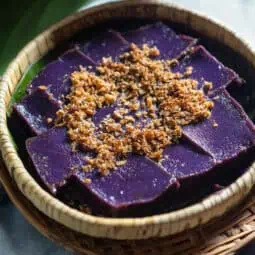
Authentic Ube Kalamay Recipe
Equipment
- Large non-stick pan (kawa) For even heat distribution and preventing burning
- Wooden spoon (sandok) Traditional tool for stirring that won't scratch your pan
- Coconut grater (kudkuran) If using fresh coconut
- Cheesecloth or fine strainer For extracting coconut milk
- Heat-resistant spatula For scraping sides of pan
- 8x8 inch baking pan or traditional wooden mold (bilao)
- Kitchen scale For precise measurements
- Heavy-duty gloves For protection while stirring
Ingredients
For the Kalamay:
- 2 cups glutinous rice flour galapong
- ¾ cup fresh grated purple yam ube halaya
- 800 ml thick coconut milk kakang gata
- 1 ½ cups white sugar
- ¼ teaspoon salt
- 2 tablespoons coconut oil langis ng niyog
For the Topping:
- ½ cup latik toasted coconut milk curds
- Banana leaves for lining dahon ng saging
Instructions
- Take your banana leaves and hold them briefly over low heat until they become soft and bendable. Wipe them clean, then use them to line your pan. Brush the leaves with coconut oil.
- Mix your glutinous rice flour with 400ml coconut milk in a large bowl. Stir until smooth with no lumps. Set aside.
- Pour the remaining coconut milk into a heavy pan over medium heat (175°C). Add your grated purple yam and stir continuously for 5 minutes until fragrant.
- Pour your rice flour mixture into the pan, stirring as you go. Add sugar and salt. Keep stirring constantly for about 30-40 minutes. The mixture will get thicker and harder to stir – this is exactly what you want.
- You'll know it's ready when the mixture pulls away from the sides of the pan and feels very thick when you stir. The temperature should be around 180°C. If you drop a small amount in cold water, it should form a firm ball.
- Pour the mixture into your banana leaf-lined pan. Use an oiled spatula to smooth the top. While it's still warm, sprinkle generously with latik (toasted coconut curds).
- Let it cool completely at room temperature for 2-3 hours. During this time, it will set and develop its chewy texture.
- Once cooled, cut into diamond shapes using a sharp knife. Clean the knife between cuts for neat edges.
- Serve your kalamay on fresh banana leaves. It pairs perfectly with hot ginger tea and makes a wonderful afternoon snack.
- Remember: Good kalamay takes patience. The long, slow stirring is what gives it that perfect sticky, chewy texture that makes it so special.
Tips from Lola's Kitchen
- Stir in a figure-8 pattern for even cooking
- Your arm will get tired - take turns with family members!
- If mixture sticks to spoon, oil it lightly
- Test doneness by dropping a small amount in cold water - should form a firm ball
Nutrition
The Story Behind Ube Kalamay
In the heart of Philippine culinary heritage lies ube kalamay, a dessert that tells the story of our archipelago's rich agricultural bounty and ingenious food preservation techniques. Long before modern refrigeration, our ancestors discovered that combining glutinous rice with coconut milk created a stable, long-lasting delicacy that could withstand the tropical climate.
The purple yam, or ube, wasn't always part of this traditional kalamay recipe. While classic kalamay has been made since pre-colonial times using just glutinous rice and coconut milk, the addition of ube emerged in regions where the tuber grew abundantly, particularly in the mountainous areas of Luzon. This innovation transformed the simple white rice cake into the striking purple delicacy we know today.
Kalamay-making became a cornerstone of Filipino community life, especially during harvest seasons when fresh coconuts and rice were plentiful. The process of preparing kalamay traditionally brought families together, with each member taking turns at the crucial stirring process that could last for hours. This communal cooking practice, known as "bayanihan" in Filipino culture, strengthened social bonds and ensured the recipe's preservation across generations.
The name "kalamay" itself comes from the ancient Tagalog word "lamay," meaning to continuously stir or mix – a testament to the patience and dedication required in its preparation. What's fascinating is how different regions developed their own versions: some adding pandan, others incorporating coconut strips, but the ube variant became particularly beloved for its natural beauty and distinctive flavor profile.
Today, ube kalamay stands at the intersection of tradition and modern Filipino cuisine. Its Instagram-worthy purple hue has caught the attention of food enthusiasts worldwide, while its deep connection to Filipino culture keeps it grounded in tradition. From humble beginnings as a preservation method to its current status as a celebrated delicacy, ube kalamay embodies the evolution of Filipino food culture – adaptive yet authentic, simple yet sophisticated.
In my own kitchen, making ube kalamay is both a continuation of tradition and a modern expression of love. Each time I prepare this dish, I'm not just making dessert; I'm participating in a centuries-old practice that connects me to countless Filipino cooks who came before, each adding their own touch to this beloved purple masterpiece.
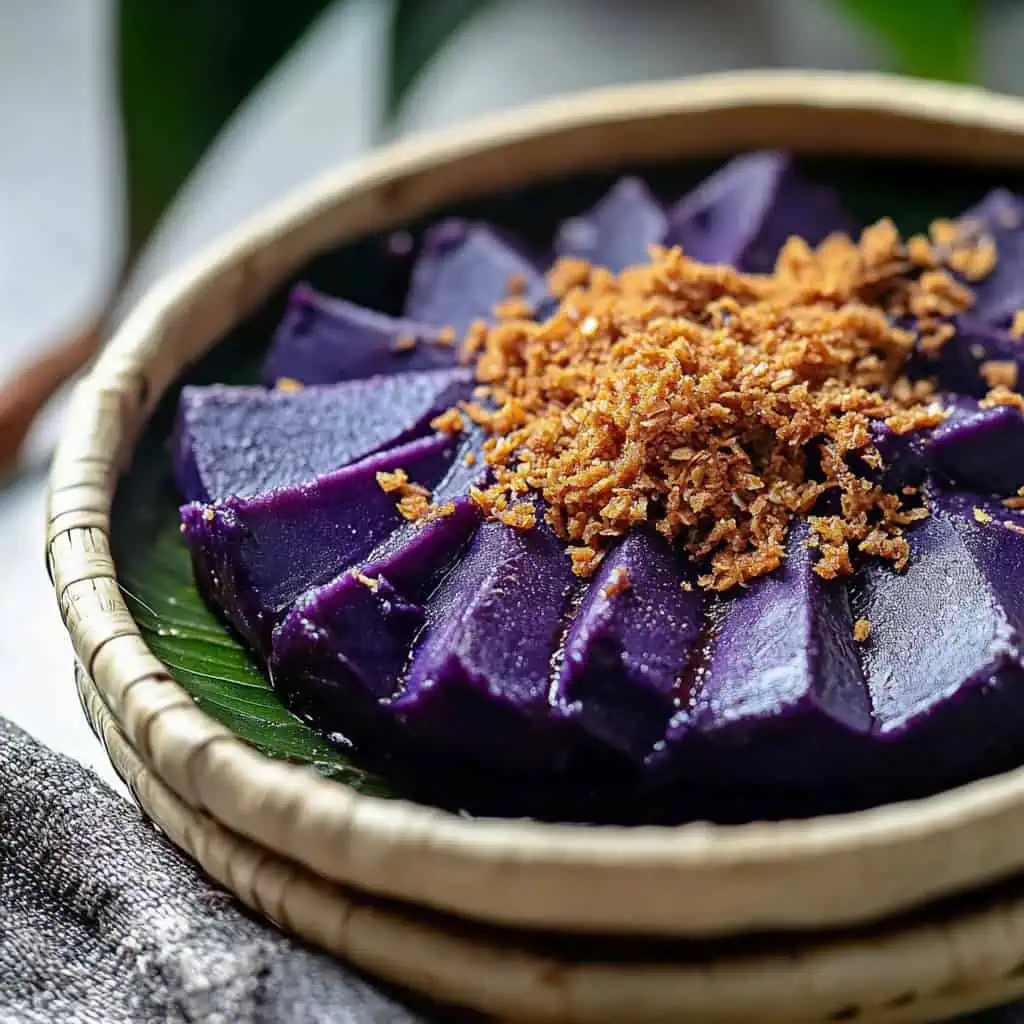





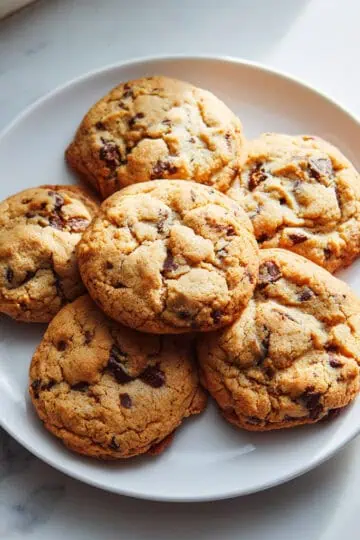
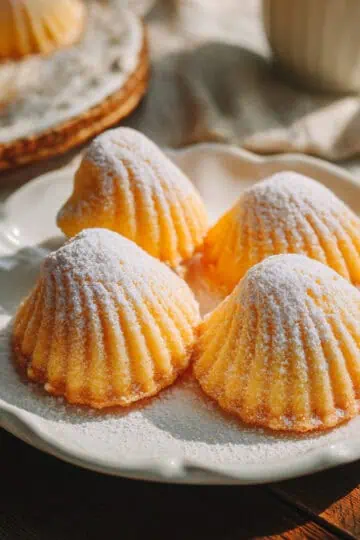
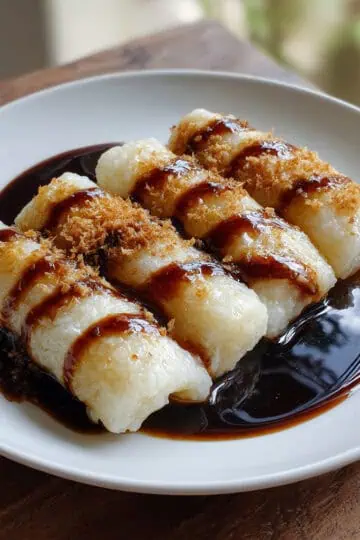
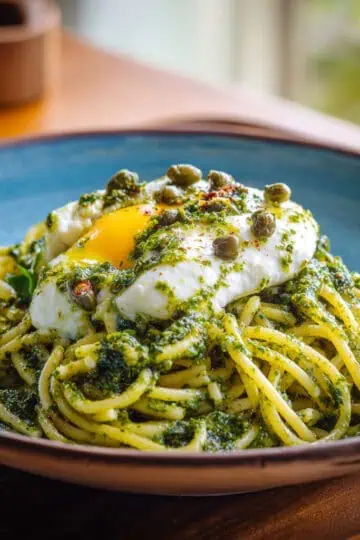
Comments
No Comments